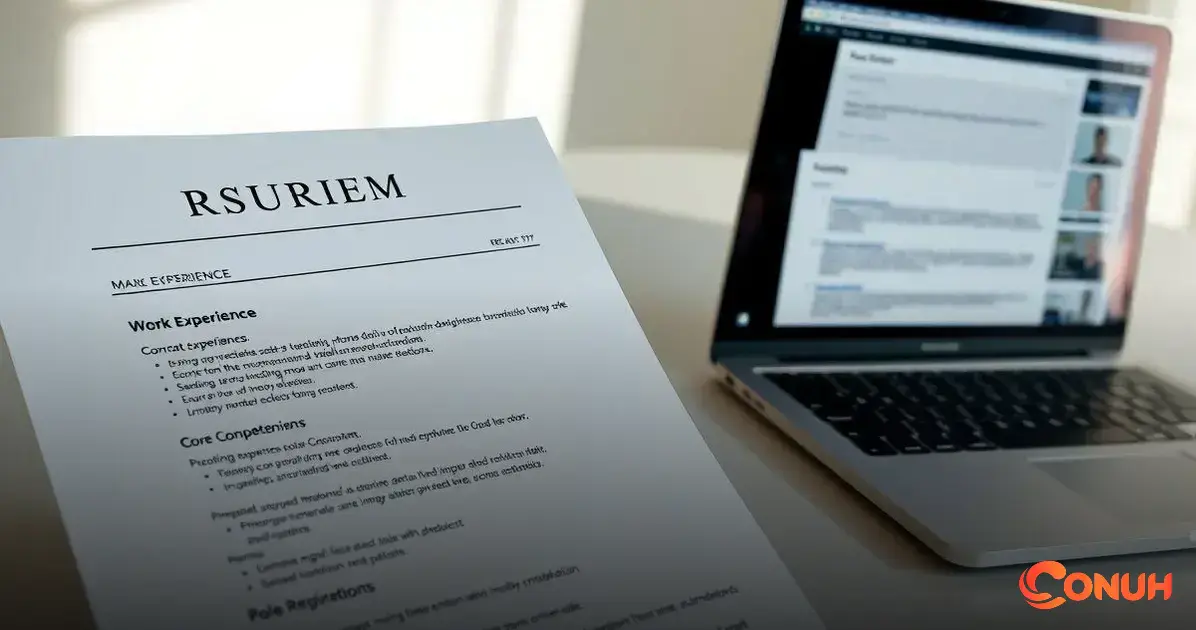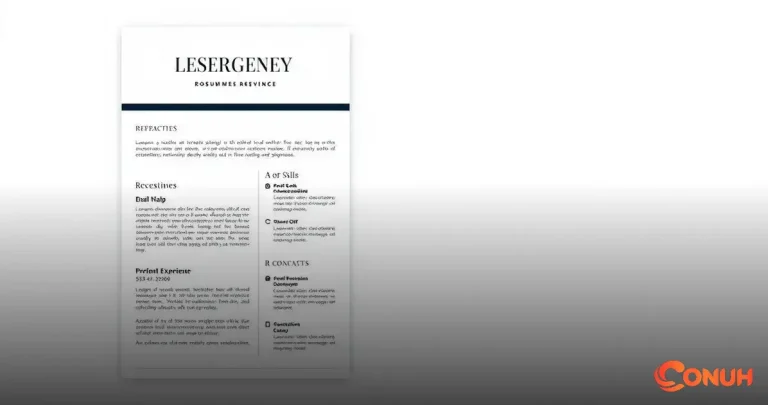ADVERTISEMENT
How to improve your resume is a question many job seekers ask when trying to stand out in a competitive market. Crafting a clear and compelling resume is your first step toward catching an employer’s attention.
Focusing on the right content and presentation can make a big difference. Highlighting your key skills and achievements in a clean layout helps your resume speak for you even before an interview.
ADVERTISEMENT
Keep reading to discover practical tips and simple tweaks that can boost your resume and bring you closer to landing that dream job.
Understanding the Importance of a Great Resume
A great resume is very important because it is your first chance to impress employers. It tells them who you are and what skills you have. A strong resume can make you stand out from other candidates, showing that you are the best fit for the job.
Employers often receive many resumes for open positions. They have limited time to review each one. Because of this, your resume must grab their attention quickly. Highlighting your skills and experiences clearly can help you get noticed in a crowded field.
Having a well-crafted resume also shows professionalism. It reflects your attention to detail and your commitment to your career. A great resume can open doors to interviews, so it is worth the effort to make it shine.
Key Elements to Include in Your Resume
When crafting your resume, it is essential to include key elements that highlight your qualifications. Start with your contact information, including your name, phone number, and email address. This ensures that employers can easily reach you. Also, consider adding a link to your professional online profile or portfolio.
Next, make sure to showcase your work experience. List your previous jobs and include your responsibilities and achievements in each role. Use action verbs to describe what you did and the positive impact you made in those positions. This gives employers a clear picture of your skills and capabilities.
Don’t forget to include your educational background and any relevant skills. Mention any degrees, certifications, or trainings that relate to the job you are applying for. Adding skills specific to the position will help you stand out even further and give you an edge over other candidates.
Common Resume Mistakes to Avoid

One common mistake to avoid is using a one-size-fits-all resume. Many job seekers send the same resume to every employer. This often leads to missed opportunities. Customizing your resume for each job application helps to highlight the skills and experiences that matter most to the specific position.
Another mistake is including unrelated information. Your resume should focus on what is relevant to the job you want. Avoid long descriptions of jobs that do not relate to your current career goals. Instead, focus on achievements and skills that match the requirements of the position you are applying for.
Lastly, be careful with spelling and grammar. Typos and mistakes can give a poor impression. Take the time to proofread your resume before sending it out. Having someone else review it can also help catch any errors you might have missed.
How to Tailor Your Resume for Each Job
To tailor your resume for each job, start by carefully reading the job description. Identify the key skills and qualifications the employer is looking for. These often include specific experience, education, or abilities relevant to the position. Highlight these points in your resume to show you are a great match for the role.
Next, modify your work experience section to include achievements that relate directly to the job. Instead of listing every responsibility from past roles, focus on what you did that aligns with the job you are applying for. Use strong action verbs and frame your accomplishments to demonstrate how you added value in previous roles.
Lastly, ensure your resume format and style match the company culture. For example, a creative job may allow more unique designs, while a corporate role may require a more traditional format. Adjusting the look of your resume shows you understand the company’s values and can communicate professionally.
Best Formats for Your Resume
The best formats for your resume often depend on your experience and the job you are applying for. The chronological format is widely used and is great for showcasing your work history. It lists your jobs in reverse order, starting with the most recent. This format makes it easy for employers to see your career progression.
Another effective format is the functional resume. This focuses on your skills rather than your work history. It is useful for those who are changing careers or have gaps in their employment. Highlighting your skills first can draw attention to what you can bring to the job.
Finally, the combination resume merges both the chronological and functional formats. It allows you to showcase your skills at the top, followed by a detailed work history. This format is ideal if you want to highlight your skills while still providing a clear job timeline.
Using Keywords Effectively in Your Resume

Using keywords effectively in your resume is essential to catch an employer’s attention. Start by reviewing the job description closely. Identify the keywords that describe the skills and qualifications the employer seeks. These words often include specific job titles, responsibilities, and qualifications that you can naturally incorporate into your resume.
When adding keywords, make sure to use them in context. Avoid simply listing them; instead, integrate them into your experiences and achievements. For example, if the job requires leadership skills, describe a project where you led a team and achieved positive results. This approach shows you have the relevant skills and helps your resume stand out.
Finally, balance is crucial when using keywords. While it is important to include relevant terms, overstuffing your resume with keywords can make it hard to read. Focus on clarity and flow, ensuring your resume remains engaging and informative while still hitting the key points.
How to Make Your Resume Visually Appealing
To make your resume visually appealing, start with a clean and professional layout. Use clear headings and a consistent font style throughout the document. Make sure that the font size is easy to read; usually, 10 to 12 points for body text works best. Consider using some white space to break up sections, which helps guide the reader’s eye and makes your resume easier to navigate.
Adding subtle design elements can enhance your resume’s overall look. Use bold or italicized text to highlight important information, such as job titles or skills. You might also use lines or boxes to separate different sections, making it clear where each part begins and ends. However, avoid excessive colours or flashy graphics, as they can distract from the content.
Lastly, in today’s digital world, consider creating a digital version of your resume. Use online templates or design tools to create an eye-catching layout. Ensure that it is still professional and easy to read on screens. A visually appealing resume not only showcases your skills but also reflects your creativity and attention to detail.







